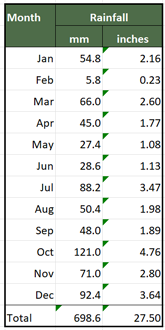If you use a camera you know how important it is to keep the camera perfectly still when you take a picture to avoid a blurry image. Camera manufacturers have come up with optical stabilisation systems to help you keep your camera steady so that you can take the perfect shot. Now of course the same is true if you are shooting video rather than still images but in the case of video you may want to move the camera to keep following a moving subject. This puts extra strain on any stabilisation system when trying to shoot video with a moving camera.
 |
| LNER Class A4 60009 Union of South Africa speeds towards York with a Charter Train |
Then, as I said before, there was a new kid on the block. Not to replace what my existing Panasonic camera was capable of but to add a new dimension to my videos. The new kid was the DJI Osmo. Simply put the Osmo consists of the same tiny camera that's used in a drone and the technological wizardry to keep the camera perfectly steady when hand held rather than being mounted beneath an air born drone. It captures 4k video and can capture still images too.
 |
| DJI Osmo Camera |
 |
| View on mobile phone with Osmo looking out of window |
 |
| Basic DJI Osmo set up |
I'm right handed and gave the GH4 the benefit of being held in my right hand and the Osmo in my left hand. The pictures below indicate how I held each camera except I swapped hands to make the video using what I consider to be my steadier hand for the Panasonic GH4.
My only reservation with the DJI Osmo is the time it takes to get set up. There's the WiFi connection to set up and the app to load up on my phone and usually a rather lengthy delay before an image of what the Osmo is seeing appears on my phone. When it goes wrong it's very frustrating but when it goes right the results are brilliant. I've included the clip below which turned out pretty well. To get the full benefit of 4k you'll need to watch it on YouTube with the HD setting on 2160p 4k.
Of course with no zoom features on the camera it in no way replaces my Panasonic GH4. The video below of the polar bears playing in the water at Yorkshire Wildlife Park is only possible because of the zoom lens on the camera. Considering that the camera was hand held on its maximum zoom for this video it shows how good the stabilisation system is on my Panasonic GH4 providing you make an effort to hold the camera steady and don't walk about with it.
Of course you have to have some idea of where I was in relation to the polar bears to understand why a telephoto lens was essential.
On this wide angle view you can see the small island constructed out of stone in the middle of the lake. A good zoom lens is required to capture some good images of the polar bears.
With all its accessories added my DJI Osmo looks like this:
As you can imagine it's not that easy to carry around assembled but I'm still experimenting with how to transport it about and put it to its best use. I'll save that for another post.

























0 comments:
Post a Comment
Thank you for visiting my blog and leaving a comment - it is great to know that there are people out there actually reading what I write! Come back soon.
(By the way any comments just to promote a commercial site, or any comments not directly linked to the theme of my blog, will be deleted as soon as I spot them) Please do not follow links from any comments that appear to be spam - if in doubt ignore.